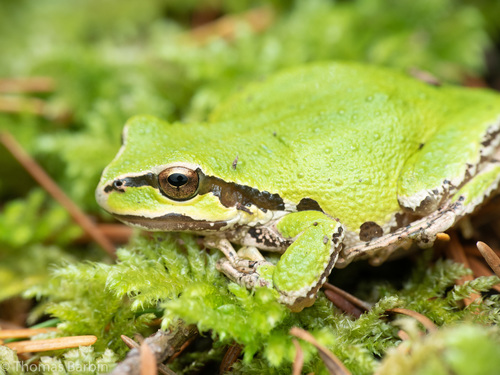
Pacific Chorus Frog
The Pacific Tree Frog (Pseudacris regilla) boasts striking green hues and a signature dark eye stripe. Known for its melodious calls, this small amphibian thrives across diverse landscapes, contributing to balanced ecosystems by controlling insect populations while sustaining predators.
6-8 years
Lifespan
Least Concern
Conservation Status
Stable
Population Trend
Distribution Range of the Pacific Chorus Frog
Pseudacris regilla, commonly known as the Pacific tree frog or Pacific chorus frog, is native to the western regions of North America. Its geographical range extends from British Columbia in Canada, through the western United States, including Washington, Oregon, and California, and reaches Baja California in Mexico.
Pacific Chorus Frog's Habitat
Environmental Conditions
The Pacific tree frog is highly adaptable and can be found in a wide variety of habitats. These include temperate forests, grasslands, chaparral, and even urban areas. It is commonly associated with moist environments and can be found near bodies of water such as ponds, lakes, marshes, and streams, particularly during the breeding season. However, it is also known to occupy dry areas when not breeding.
Ecological Niche
Pseudacris regilla occupies an ecological niche as both a predator and prey species. It plays a role in controlling insect populations as it primarily feeds on arthropods, including a variety of insects and spiders. The frog itself is preyed upon by birds, snakes, and larger mammals. This species exhibits notable adaptability, which is evident in its capacity to thrive in diverse environmental conditions and its morphological variations that may occur in different regions, aiding its survival in various habitats.
Copyright @ Nature Style Limited. All Rights Reserved.
 English
English